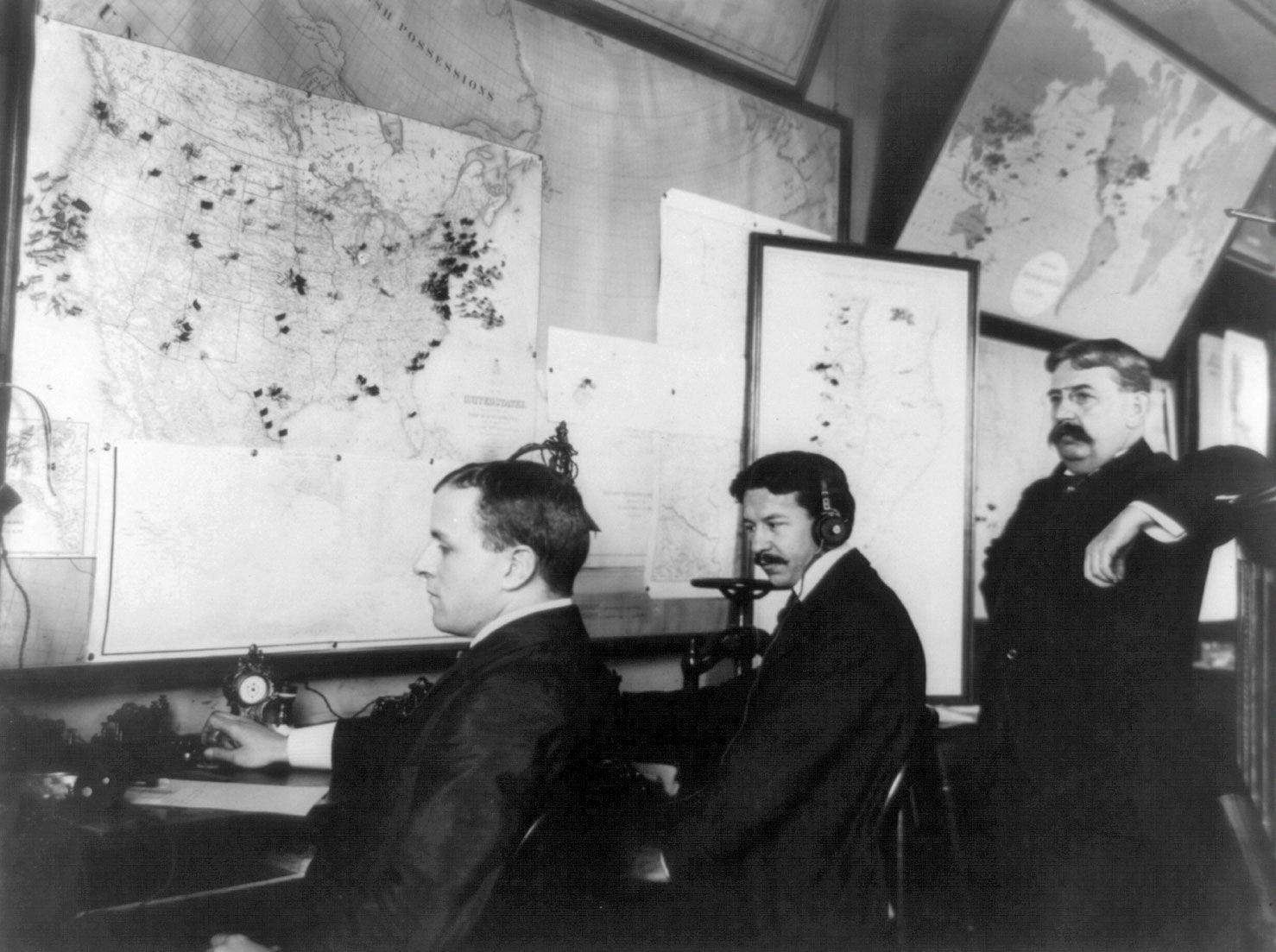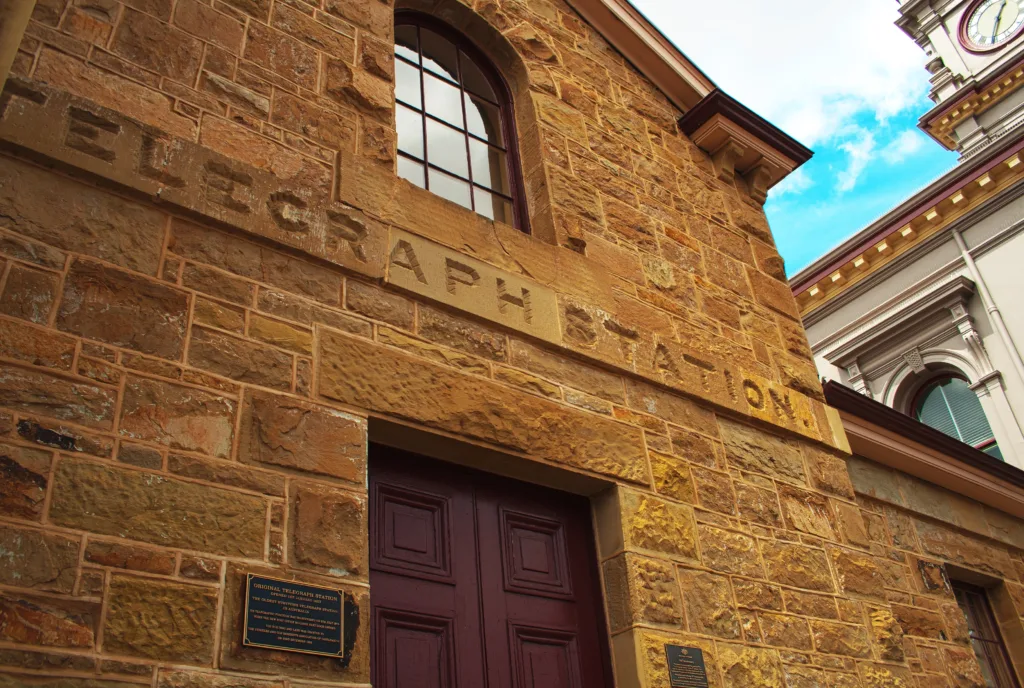Telegraphs are devices that allow people to communicate over long distances using electrical signals transmitted over wires. They were invented in the early 19th century and quickly became a popular means of communication, particularly for sending urgent messages.
The basic operation of a telegraph involves two main components: a transmitter and a receiver. The transmitter, also known as the telegraph or transmission key, is used to send messages by transmitting electrical signals over a wire. The receiver, on the other hand, is used to receive these signals and convert them into a readable message.
In the early days of telegraphy, the transmitter typically consisted of a simple switch that could be used to complete or break an electrical circuit. When the switch was closed, an electrical current wuld flow through the wire, while opening the switch would interrupt the flow of current. By manipulating the switch in a specific pattern, known as Morse code, telegraph operators could send messages using a series of dots and dashes.
The receiver, on the other hand, typically consisted of an electromagnet with a stylus on the end of an arm. When an electrical current flowed through the wire, it would cause the electromagnet to become magnetized, pulling the arm and stylus towards it. By carefully adjusting the strength of the electromagnet, telegraph operators could create a series of dots and dashes that corresponded to the Morse code being transmitted.
Over time, telegraph technology continued to evolve, with improvements being made to both the transmitter and receiver. For example, the telegraph key was eventually replaced by a more sophisticated device known as a sounder, which used a metal armature to produce an audible clicking sound whenever a current flowed through it. Similarly, the simple electromagnet used in early receivers was replaced by more advanced devices that could detect and amplify weak signals, allowing messages to be sent over longer distances.
Today, telegraphy has largely been replaced by more advanced forms of communication, such as the telephone and internet. However, the principles of telegraphy continue to be used in modern technology, such as in the transmission of digital data over electrical wires.
Telegraphs have played an important role in the history of communication, allowing people to send urgent messages over long distances using electrical signals. While the technology has largely been replaced by more advanced systems, the principles of telegraphy continue to be used in modern communication technology.
How Telegraphs Worked
The telegraph was a revolutionary invention that allowed people to communicate over long distances in a matter of seconds. The basic principle of the telegraph was to send electrical signals through a wire to convey messages. Here’s how it worked:
1. A person at one end of the telegraph line would use a telegraph key to send electrical signals down the wire.
2. The key would complete an electrical circuit, allowing current to flow through the wire.
3. The electrical signals were sent in the form of dots and dashes, which could be translated into letters and words using a code called Morse code.
4. At the other end of the telegraph line, a receiver would pick up the electrical signals and translate them back into dots and dashes using an electromagnet with a stylus on the end of an arm.
5. The dots and dashes could then be decoded into letters and words, allowing the message to be read.
One of the key advantages of the telegraph was its speed. Messages could be sent and received alost instantaneously, making it possible to communicate across great distances in a matter of seconds. The telegraph also allowed for greater efficiency and coordination in areas such as business, transportation, and military operations.
The telegraph was a groundbreaking invention that paved the way for modern communication technologies. Its impact on society cannot be overstated, and it remains an important part of our technological history.

Source: britannica.com
Connecting Telegraphs
Telegraphs connect by transmitting electrical signals through wires. The process begins with the telegraph or transmission key, which serves as the transmitter. The telegraph key is activated by pressing a button, which sends an electrical signal down the wire. The wire then carries the signal to the receiver, which is typically located in a distant location.
The receiver converts the electrical signal back into a message that can be read by a human operator. The telegraph wires are usually made of copper, which is an excellent conductor of electricity. The wires are typically insulated with rubber or oter materials to prevent electrical interference or damage.
Telegraph wires were commonly strung between poles or attached to buildings, and they could travel for long distances. In some cases, telegraph wires were laid underground or underwater, such as the transatlantic cable that connected Europe and North America.
Telegraphs connect by transmitting electrical signals through wires, allowing people to communicate over long distances quickly and efficiently.
How Telegraphs Work on Ships
On ships, telegraphs are used as a means of communication between the bridge, where the ship is controlled, and the engine control room. The telegraph system consists of an engine order telegraph, wich is a lever that can be moved to different speed positions for both the ahead and astern directions.
When the captain or officer on the bridge wants to change the speed or direction of the ship, they move the lever on the telegraph to the desired position. The telegraph then sends an electrical signal to the engine control room, indicating the change in speed or direction. The engine crew then adjusts the engines accordingly.
To ensure clear communication between the bridge and engine control room, the telegraph system is equipped with a bell and a gong. When the lever is moved, the bell rings in the engine control room to notify the crew that a new order has been received. Once the order has been executed, the gong is sounded to signal that the new speed or direction has been set.
It is important to note that the telegraph system is only used for communication between the bridge and the engine control room. Other forms of communication, such as radios and intercoms, are used for communication between different parts of the ship or with other ships.
The telegraph system plays a crucial role in ensuring the safe and efficient operation of a ship. By allowing for clear and immediate communication between the bridge and engine control room, the telegraph system helps to prevent accidents and ensure that the ship is able to navigate smoothly and effectively.
The Power Source of Telegraphs
Telegraphs were powered by varius sources depending on the time period and technology available. The earliest telegraphs were powered by static electricity, which was produced by friction between two materials such as glass and silk. This method was used by the English inventor Francis Ronalds in 1816 to build the first working telegraph.
Later, telegraphs were powered by batteries, which provided a steady and reliable source of electricity. These batteries were usually made of zinc and copper plates separated by an electrolyte solution, such as sulfuric acid. The first telegraph to use batteries was demonstrated by the American inventor Samuel Morse in 1837.
In the mid-19th century, telegraphs began to be powered by steam engines, which were more powerful and could transmit messages over longer distances. These steam-powered telegraphs were used extensively in Europe and the United States for many years.
In the early 20th century, telegraphs were powered by electricity from power grids, which provided a more efficient and cost-effective source of energy. This made telegraphs even more accessible and widely used for communication around the world.
Telegraphs were powered by a variety of sources throughout history, including static electricity, batteries, steam engines, and electricity from power grids. Each method had its advantages and disadvantages, but all contributed to the development and widespread use of telegraph technology.

Conclusion
Telegraphs work by transmitting electrical signals over wires using a transmitter and a receiver. The transmitter, or telegraph key, sends signals in the form of dots and dashes which are translated into letters and words by the receiver using an electromagnet and stylus. This revolutionary communication technology was first invented by Francis Ronalds in 1816 and has since been used for a variety of applications, including ship navigation with the engine order telegraph. the telegraph paved the way for modern telecommunications and continues to be an important part of our history and technology.
